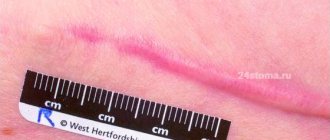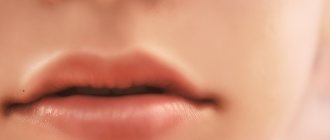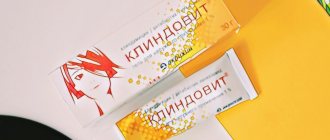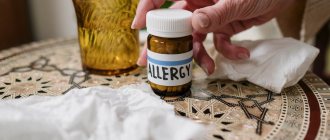Only 20 percent of schoolchildren can boast of healthy facial skin, the remaining 80 are forced to hide their hated acne behind long bangs and under a thick layer of foundation. How to get rid of acne? Let's talk to an expert.
Alim Khakuashev
Alim Khakuashev Dermatologist, cosmetologist, trichologist at the clinic for children and adolescents “SM-Doctor”
With the onset of adolescence, hormonal changes in the body begin. Testosterone is to blame for everything, the level of which affects the function of the sebaceous glands. During puberty, their function increases, resulting in acne. If a bacterial infection occurs, pustules will develop.
At 13-14 years old, black spots and red inflammation on the forehead and cheeks become the number one problem. The child looks at himself in the mirror with horror. No amount of persuasion and examples from stars (Cameron Diaz, Victoria Beckham, Rihanna) whose skin is far from ideal helps.
“Acne means endless ridicule from classmates,” says the mother of a 15-year-old son. — Clean facial skin helps you become more confident and overcome complexes. Unfortunately, there is no such miracle remedy that will get rid of acne once and for all. And dragging a teenager to a cosmetologist is also not easy. I really don’t know what to do.”
Mothers of girls on various forums also constantly discuss such topics. “How to cure these teenage acne? - asks Svetlana, mother of a 12-year-old daughter. — We already had ointments, tinctures, lotions, etc. in our arsenal. So far nothing has helped overcome this trouble. Grandmothers believe that in a couple of years everything will go away on its own, but I’m not sure.”
The cosmetologist warns that acne will not disappear on its own: “If you have facial skin imperfections, you need to contact a specialist as early as possible so as not to start the problem and take the necessary measures in a timely manner. Often, children and adolescents are embarrassed to see a doctor themselves or, due to their age, inadequately assess the severity of the disease. Therefore, parents should carefully monitor the condition of the child’s facial skin and, if necessary, immediately sound the alarm.”
What it is
This term suggests a symptom complex of secondary rashes. They appear after various forms of skin inflammation, pimples, and acne. Considering that its debut usually occurs in adolescence, the remaining traces pose a serious problem for youth and affect the psychological state of young people. If acne develops at an older age, the patient may also experience post-acne; treatment in this case is complicated by the general condition of the skin.
The consequences come in the following forms:
- hyperpigmentation;
- pathological scars;
- atheromas;
- milia (whiteheads).
Treatment and subsequent recovery of patients requires an integrated approach.
The main thing is expert advice
If the problem of the external condition of the skin of the face and décolleté is a constant or regularly occurring problem for you, then to eliminate it you need to consult with a specialist - a dermatologist. In the vast majority of cases, this condition of the skin is caused by problems with the internal organs and systems of the human body. If necessary, the doctor will recommend consultation with specialized specialists - nutritionist, endocrinologist, hematologist. Only a specialist can prescribe oral medications - antibiotics, hormonal medications, sedatives. Medicinal plants, which are recommended by the attending physician, effectively help in solving skin problems.
“We are still friends”: Derevianko commented on the breakup with his wife
A Brazilian travels 36 km by bike every day to take his loved one home.
Rare shot: Viktoria Isakova showed her grown-up daughter from Yuri Moroz (new photo)
Reasons for appearance
Human skin has a complex structure; in addition to the cells themselves, it contains hair follicles, sweat and sebaceous glands. If the functioning of the latter is disrupted, their ducts narrow, making it difficult for secretions to reach the surface. It accumulates inside the gland, creating ideal conditions for the proliferation of bacteria and the formation of inflammation.
Over time, swelling occurs in the area of the pimple, and collagen begins to be actively produced in this area. This means that denser tissue is formed, so patients’ requests often sound like this: “How to remove post-acne scars on the face?” The capillary network also grows and the work of pigment cells is stimulated. Darker stains are formed that are more durable.
Also factors that provoke the negative consequences of acne are:
- long-term fight against inflammation;
- unprofessional acne removal;
- the presence of nodules or cysts on the skin.
Persistent acne
Post-acne may be a consequence of this phenomenon, which cannot be dealt with for a long time. As a rule, to solve this problem it is recommended to do a hormone test.
The fact is that the receptors of the sebaceous glands, which are directly involved in the process of acne formation, are sensitive to male hormones, androgens (they are produced in the body of both women and men). An increase in their production also leads to a decrease in the content of linoleic acid in sebaceous secretions, and subsequently to the reliability of the skin’s protective barrier.
Such situations, and therefore prolonged inflammation on the surface of the epidermis, can be provoked by the following factors:
- puberty;
- endocrine diseases;
- obesity;
- menopause;
- gastrointestinal diseases;
- taking medications;
- stress;
- chronic fatigue syndrome, etc.
Mechanical damage to the skin
In order not to solve the problem of how to quickly get rid of post-acne scars forever and remove neoplasms, during the period of exacerbation of acne, it is recommended to avoid rough influence. Squeezing pimples, as well as mechanical damage (often resulting from careless care), leads to the formation of scars and age spots in this area. This is especially dangerous for people with dark skin, and also if the patient’s age exceeds 35 years. The peculiarities of the functioning of the endocrine glands during this period often lead to the formation of scars after acne and acne.
Mechanical injury to the face can also result from inaccurately performed cleaning or deep peeling. These procedures are not recommended during an exacerbation period.
Toothpaste masks
Inflamed rashes and lumps on the face can be soothed with masks containing toothpaste.
Anti-redness toothpaste mask
Grind 1 Aspirin tablet into powder, add half a small spoon of white toothpaste and mix well. Apply to problem areas and wash off after 10 minutes.
Recipe with baking soda for acne
Mix 1 large spoon of baking soda with two peas of paste. The resulting composition is applied to acne areas or the entire face. After half an hour, wash off with chamomile infusion and apply a soothing cream.
Toothpaste mask against inflammation
1 small spoon of baking soda, ½ small spoon of toothpaste, 2 large spoon of water, stir well. Apply to pimples for 5-10 minutes. After washing with warm water, dry the skin. The procedure is repeated once a day until the condition improves.
Mask for inflammation and pustules
1 small spoon of blue clay is mixed with the same amount of water and a pea of toothpaste. Apply to the acne area and wash off after 20 minutes. The procedure is carried out every two days. In just a week, the skin will look healthy.
Mask for subcutaneous pimples and acne
Salicylic-zinc ointment and toothpaste help here. Both drugs have a powerful antiseptic effect and promote rapid healing of the integument. A small spoon of salicylic paste is mixed with two peas of toothpaste, applied to problem areas and left overnight. In the morning, wipe your face with a cotton sponge soaked in a soap solution, and then wash with running water. You can replace salicylic ointment with any preparation containing zinc.
Anti-blackhead mask
1 small spoon of table salt is mixed with a pea of herbal toothpaste. Apply to the area strewn with dots (the most common area of the face with dots is the nose and chin) and leave for 5 minutes. Afterwards, wash with cool water to tighten the pores.
Streptocide mask for acne
The Streptocide tablet is crushed into powder and mixed with a small amount of toothpaste. After obtaining a homogeneous substance, lubricate each tubercle. After 20 minutes, wash thoroughly.
Areas of localization and how to remove post-acne spots
The place where scars appear can be not only the face, but also other areas of the body:
- neckline;
- back;
- neck.
Be that as it may, in most cases the marks are on open areas of the body, which worsens the psychological state of the patients. Improper treatment can lead to the skin retaining an uneven texture, and the places where there were inflamed acne will be clearly visible. That is why it is important for the doctor to give comprehensive recommendations on how to quickly cure and remove post-acne on the face, how to get rid of spots on other parts of the body, so that the patient’s quality of life does not decrease and the emotional background is normalized.
Kinds
The consequences of acne are of several types:
- scars - at the site of the pimple, an area of dense tissue is formed, which is noticeably different from the surrounding skin and is characterized by a high content of collagen fibers;
- pigment spots - they form at the site of acne rashes and are noticeably different from the general tone;
- congestive erythema - a complication that occurs as a result of inflammation of small vessels, as well as subcutaneous fatty tissue and is accompanied by redness and thickening at the site of the former pimple;
- whiteheads, enlarged pores, etc.
To understand how to get rid of post-acne on the face and what removes it well, you need to establish which of the main types your problem belongs to. Only after this can you create an effective comprehensive treatment program.
We recommend
Curacen Essence (20 fl x 2 ml)
Nanoneedles with ultra-thin walls 30G
Nanoneedles with ultra-thin walls 33G
Curacen – for injection
Enlarged pores
The fact is that these are opening ducts of the sebaceous glands and the problem is directly related to acne. They expand due to hormonal imbalances, increased oily skin, poor diet, use of inappropriate cosmetics and other reasons. An additional factor that has recently been identified is the impact of free radicals, their content is increased in the atmosphere of large cities. In search of a way to exactly how and whether it is possible to cure post-acne on the face, you need to find out why the pores are enlarged.
Should we fight this problem? Certainly. They look unaesthetic, worsen the dermal relief, and in addition, they are an entry point for infections and are clogged with the secretion of the sebaceous glands. The processes of skin respiration and metabolism are disrupted.
To avoid enlarged pores and acne formation, you can undergo professional cleaning on time. This procedure stimulates their narrowing and normalizes the functioning of the sebaceous glands. With its help, you will stop thinking about how to get rid of post-acne spots and remove redness on your face with the help of a cosmetologist.
Stagnant traces
They are also called erythema. They arise as a result of capillary expansion. As a result, red areas form on the skin. In some cases, such phenomena go away on their own, especially if they arise as a response to mechanical stress, due to a reaction to intense sun or similar factors.
But most often, it is better to consult a specialist with such a problem, since usually the consequences of this kind are persistent and cannot be removed with home remedies.
Hyperpigmentation (brown spots)
Increased skin pigmentation usually occurs as a result of inflammation of papulopustular elements. Papules are inflamed small nodules with a diameter of 2-4 mm. Pustules are nodules with a cavity filled with pus formed inside them. A light-colored crust may form on their surface.
The formation of hyperpigmentation is usually promoted by active solar and mechanical exposure, for example, when trying to squeeze out pimples.
Whiteheads
The problem of how to effectively get rid of post-acne, how to cure the consequences of inflammation, is especially aggravated if the skin lesion takes the form of whiteheads (milia).
As a rule, they are localized in the following areas of the face:
- forehead;
- nose;
- cheeks;
- chin;
- around eyes.
Most often, milia appear during periods of hormonal changes, including adolescence, as well as during pregnancy. The second factor influencing the formation of whiteheads is increased fat content.
Ways to effectively remove post-acne scars, how to get rid of them in these situations, should include changing your diet, a competent approach to skin care, as well as monitoring hormonal levels and its timely correction.
Scarring
They can form where pimples once were. Studies have been conducted in which it was found that about 1% of people who have suffered from acne suffer from them. However, approximately one-seventh of scars are disfiguring in nature, which means they lead to serious psychological problems. This condition requires an individual approach and careful study of the quality of the skin around the scar. Also, the nature of treatment depends on the stage of maturity.
Where to start caring for a cosmetologist?
With skin cleansing (superficial and deep) depending on skin type, which is determined after examination through a magnifying glass.
Cleaning is carried out in several stages: cleansing with foam, disinfection with antiseptics, skin peeling, mechanical cleaning, applying a mask. The frequency of procedures is strictly individual and depends on the severity of the condition, skin type, season, effect of therapy and other factors. Typically, the course of treatment with timing and procedures is discussed at an appointment with a doctor. On average, facial cleansing is carried out once every 2-3-4 months. If this is a course of chemical peelings, then the procedure is usually carried out (also depending on the type of peeling) once every 2 weeks. A total of 3-5 procedures are required.
Perhaps a visit to a cosmetologist will not be enough; to combat acne you will have to involve other specialists: a dermatologist, gynecologist, gastroenterologist, endocrinologist. Acne treatment should ideally begin with a diagnosis of the body. You will need to take a general blood test, a stool test for dysbacteriosis, microscopy of skin scrapings and a number of other studies.
Published on the portal parents.ru
Methods of disposal
Advising on what works well to remove acne marks on the face, experts draw attention to the need for an integrated approach:
- diagnosis by a doctor, drawing up recommendations taking into account the individual characteristics of the patient’s skin;
- consultation with a cosmetologist who will recommend hardware and injection methods;
- regular use of home care products.
What can you do at home?
To get rid of stains, it is best to take the advice of experts who recommend home care products designed to resolve scars, such as Contractubex. The enzymes contained in these medications are designed to break down the dense collagen fibers that form scar tissue.
But home peels and self-exfoliation are unlikely to give the expected effect. They act at the level of the epidermis, and acne is a deep-seated change in the skin that affects the dermis. That is why it is recommended to consult a doctor for professional treatment of post-acne and prescribe the necessary products, which should be designed for deep care.
What treatment methods are used in cosmetology?
How to quickly remove acne, spots, scars and cysts? Patients often come to a cosmetologist with such a request. Experts most often recommend the following treatment options:
- Phototherapy. Exposing the affected areas to light of a certain length improves the condition of the skin. As a result, inflammation decreases and erythema disappears.
- Microdermabrasion. This is a delicate procedure, during which the cosmetologist removes the top layer of the epidermis and carefully polishes its surface. It is effective if home cosmetics do not allow you to choose a product that can remove post-acne.
- Laser resurfacing. It is not mechanical and is necessary to improve the relief due to the action of the light beam. The laser allows you to fine-tune the depth of exposure, but it is important to remember that for about 10 days after it, crusts and redness will remain on the face.
Reviews
Most experts are of the opinion that this method of fighting acne has become widespread not so much because of its effectiveness, but because of the affordable cost of the products.
But many users indicate in reviews that this method really gives positive results.
You can also leave your feedback if you used this method in the comments to this article.
If you find an error, please select a piece of text and press Ctrl+Enter.
Tags homemade toothpaste treatment
Did you like the article? stay tuned
Previous article
Is it possible to cure allergic stomatitis?
Next article
Fissure caries: when to start treatment, causes and consequences
How to quickly lighten or conceal
This is only possible if you use an effective integrated approach. That is, here it is necessary to combine competent home care and post-acne treatment from a cosmetologist, and you also need to take the necessary preventive measures.
Cosmetic and therapeutic products provide noticeable positive results, including:
- retinol;
- soft acids;
- keratolytics;
- natural ingredients, including badyagu and arnica.
However, they must be used with caution. Skin with acne scars is sensitive and needs delicate and competent care; active components of cosmetics can only aggravate the situation. In particular, it is important to remember that retinol is UV sensitive and should not be used if you plan to go out in the sun. That is why it is not recommended to get rid of this problem on your own, but should be done under the supervision and control of a doctor.
When can you use toothpaste?
The product is intended for dental care, so it is worth using it when other methods do not help.
It is also worth considering the following nuances:
- In order not to cause severe irritation, you must first try the paste on a healthy area of skin: hold it for 20 minutes and see how the body reacts. If there are no negative manifestations, you can begin treating acne;
- Toothpaste in its pure form should not be applied to large areas of the face. You can lubricate only problem areas, pointwise;
- It is not recommended to treat pustules and the skin around the eyes with a dental hygiene product.
Important! During treatment, it is not recommended to use foundation and powder, excluding fortified and mineral formulations of medicinal cosmetics.
Can spots go away on their own?
How to quickly remove acne marks, and can they disappear without any help? This question is asked by many patients who are encountering this problem for the first time. It is important to remember that scarring and pigment formations on the skin cannot be ignored; it is imperative to undergo treatment. They do not go away on their own, and without the necessary therapy the situation can only get worse. Therefore, we recommend that you come for a consultation with a dermatologist and, if necessary, undergo an examination.
We recommend
Curacen Essence (20 fl x 2 ml)
Nanoneedles with ultra-thin walls 30G
Nanoneedles with ultra-thin walls 33G
Curacen – for injection
Tea tree
Tea tree leaf extract has been known for its antibacterial properties for centuries. Today you can buy the oil of this plant in pharmacies and cosmetics stores. Apply it with a cotton swab to the problem area - redness or pimple. The oil will have the desired therapeutic effect, while allergies to its components occur in extremely rare cases.
How to cure with the drug Curasen
When looking for an option on how to effectively remove post-acne on the face, placental therapy comes first. In particular, dermatologists recommend using the drug CURACEN. Due to the fact that it is made on the basis of human placenta hydrolyzate, it has the following effects:
- deep hydration and nutrition of the skin from the inside, prevention of inflammatory processes;
- increasing elasticity and firmness;
- compaction and alignment, creation of an internal cellular framework;
- smoothing out fine, moderate and deep wrinkles;
- elimination of hyperpigmentation, as well as reducing the severity of dark circles in the lower eyelid area;
- tightening in conditions of gravitational ptosis of soft tissues;
- stimulation of the body’s own synthesis of new cells, as well as acceleration of metabolism;
- assistance in restoring the dermis after aggressive cosmetic procedures or plastic surgery.
What effect is expected from the paste?
Using toothpaste for acne, you can clean and tighten pores, stop the inflammatory process on the face, prevent the further spread of germs, and relieve pain. It also prevents the formation of blackheads, rejuvenates, and tightens sagging skin (as part of masks).
A greater effect can be achieved if you act comprehensively:
- include fresh vegetables, fruits, berries, herbs in the diet;
- walk a lot outside;
- abstain from cigarettes and alcohol;
- do not avoid vigorous physical activity, do exercises, go for a morning jog.
You can speed up the treatment process by wiping your face with Chlorhexidine, washing your face with chamomile decoction, using a moisturizer that prevents excessive peeling of the epidermis, and regularly cleansing the surface of your face from dead cells using scrubs and peels.
How to prevent acne
To remove acne and red post-acne, remove traces, treatments in cosmetology and therapy turn out to be very effective. However, in many cases it is easier to prevent the formation of acne and subsequent complications:
- balance your diet, exclude fatty foods, limit your consumption of sugar, tonic drinks, and canned foods;
- use cosmetics suitable for your skin type;
- do not overuse makeup;
- do not squeeze pimples;
- consult a dermatologist.
Contraindications
Like any anti-acne cosmetic product, the paste has a number of contraindications that you need to remember when starting acne treatment.
Use is prohibited or undesirable:
- people with dry sensitive skin;
- children under 12 years old;
- for dermatitis and allergies;
- pregnant and lactating women;
- for blood diseases.
It is dangerous to use a folk recipe for systemic diseases such as lupus erythematosus, scleroderma, hemophilia.
Attention!
If itching and burning occurs, you must immediately wash off the paste with water and lubricate your face with panthenol or baby cream.











